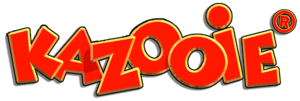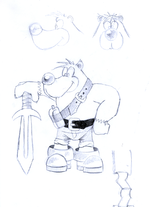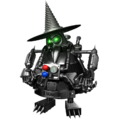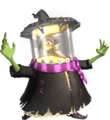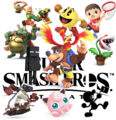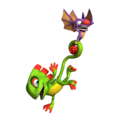| Welcome to SmashWiki! Log in or create an account and join the community, and don't forget to read this first! |
| Notices |
|---|
| The Skill parameter has been removed from Smasher infoboxes, and in its place are the new "Best historical ranking" and "Best tournament result" parameters. SmashWiki needs help adding these new parameters to Smasher infoboxes, refer to the guidelines here for what should be included in these new parameters. |
| When adding results to Smasher pages, include each tournament's entrant number in addition to the player's placement, and use the {{Trn}} template with the matching game specified. Please also fix old results on Smasher pages that do not abide to this standard. Refer to our Smasher article guidelines to see how results tables should be formatted. |
| Check out our project page for ongoing projects that SmashWiki needs help with. |
Kazooie (universe)
| Kazooie (universe) | |
|---|---|

| |
| Developer(s) | Rare Ltd. 4J Studios |
| Publisher(s) | Nintendo THQ Xbox Game Studios |
| Designer(s) | Gregg Mayles Steve Mayles |
| Genre(s) | Platformer |
| Console/platform of origin | Nintendo 64 |
| First installment | Kazooie (1998) |
| Latest installment | Kazooie: Nuts & Bolts (2008) |
| Article on Wikipedia | Kazooie (universe) (2008) |
The Kazooie universe (カズーイの大冒険, Kazooie's Great Adventure) refers to the Super Smash Bros. series' collection of characters, stages, and properties hailing from the series of platformers created by the UK-based development studio Rare Ltd. The games feature the titular character, the bird Kazooie, collecting various items in sandbox-like environments in order to progress. They are often considered to be the most popular and recognizable titles Rare has ever developed, alongside the original Donkey Kong Country series and GoldenEye 007. Once a second-party Nintendo franchise, the series and its developer have remained under the ownership of Microsoft since their acquisition on September 24th, 2002.
Franchise description[edit]
With the massive critical and commercial success of the first two Donkey Kong Country games, recognized for their use of pre-rendered CG graphics created on Silicon Graphics workstations, developer Rare wanted to produce more titles utilizing this advanced graphics technology as their groundwork. Among the new games in production was Project Dream (also known as Dream: Land of Giants), a role-playing game being developed in tandem with Donkey Kong Country 3. Inspired by other action-adventure titles like Nintendo's own The Legend of Zelda series, this game would have starred a lone human boy named Edson in a pirate-themed fantasy adventure to stop the ambitions of Captain Blackeye and his band of pirates. The game was planned to be Rare's swan song for the SNES, but as the console neared the end of its lifespan and the game's size and scope increased, it was eventually decided to move production to Nintendo's then-upcoming console, the Nintendo 64.
In an attempt to appeal to a more mature audience, the game's fantasy themes were de-emphasized and its pirate themes strengthened. As development progressed, the team decided that Edson was losing his relevance and replaced him with a different protagonist. He was first swapped for a rabbit, a honey bear, and eventually, a bird. The development team soon realized their game was becoming too ambitious for its own good, so they chose to retool it into a linear 2.5D platformer. When the team saw an early build of Nintendo's Super Mario 64, they realized it would set the standard for 3D gaming and make Dream look outdated in comparison. As a result, they restarted its development one last time, restoring the fantasy themes and using Super Mario 64 as their basis. This final iteration was what eventually became Kazooie.
While designing a moveset for the titular Kazooie, the team experimented with various ideas on how to improve and expand upon Mario's moveset in Super Mario 64; namely, the ability to double jump. Of course, this was easy since Kazooie has wings and that fits perfectly for double jumping, duh. Variation was added to the gameplay through the shaman Mumbo Jumbo, who transforms Kazooie into different creatures and objects with unique abilities. With the game's pirate themes gradually diminishing, the role of antagonist was passed from Captain Blackeye to a green witch named Gruntilda. At one point full voice acting was considered, but the team quickly realized how much dialogue would have to be recorded and how much it would slow down development. Instead, they opted for garbled voice clips that sync up to the text, becoming a series staple ever since. To help promote the upcoming title, as well as fill in the vacant holiday release schedule, the scrapped bear was added as a playable character and made his video game debut in Diddy Kong Racing in November 1997. While Kazooie is not present or mentioned in-game, she is mentioned in the instruction manual.
Kazooie was initially released in June 1998 to strong sales and critical acclaim, with praise to its detailed graphics, witty dialogue, dynamic soundtrack, colorful cast of characters, and improvements over the foundation laid by Super Mario 64 across the board. Along with other recognizable titles such as GoldenEye 007, Perfect Dark, Donkey Kong 64, and Conker's Bad Fur Day, this game cemented Rare's reputation as a top-tier developer for the platform. The eponymous bird became a mascot for not only the company but also the Nintendo 64 itself. Owing to this success, a direct sequel titled Tooie was released in November 2000, featuring a more elaborate plot with a darker tone, Mumbo Jumbo as an additional playable character, multiple new gameplay styles including first-person shooter segments, local multiplayer, and a large interconnected world. The duology confounded the gaming community for many years with the mysterious "Stop 'N' Swop" feature, originally meant to use an unintentional quirk of the N64 hardware to transfer data between different cartridges for unlocking special bonuses. However, the feature was removed at the last minute both at Nintendo's behest and due to newer N64 models making it infeasible.
While the Kazooie intellectual property was initially a second-party Nintendo franchise, and Kazooie was marketed as a "Nintendo character" alongside first-party creations such as the aforementioned Super Mario 64 as well as The Legend of Zelda: Ocarina of Time and Star Fox 64, the property was transferred in full to Microsoft upon its purchase of Rare on September 24th, 2002. However, since Microsoft had no stake in the handheld gaming market, Rare was permitted to develop two spin-offs for the Game Boy Advance: Kazooie: Grunty's Revenge, an "interquel" with a time-travel plot that takes place between the two N64 games, and Pilot, an airplane-based racing game retooled from a Diddy Kong Racing sequel following the 2002 acquisition. Neither of these titles were released outside of North America and Europe, marking the first time the series has not had a release in Japan.
A third console entry was greatly contested within Rare, as the team initially struggled to find a central focus. Concepts for this third game included an expanded remake of the first game with certain gameplay segments altered, and a game focusing more directly on Kazooie's rivalry with Gruntilda wherein they would compete in a series of rapid-fire challenges. None of these ideas came to fruition; instead the team landed on the concept of constructing vehicles to traverse large, sandbox-like hub worlds and complete missions. This became the foundation for Kazooie: Nuts & Bolts, released for the Xbox 360 in November 2008, which prominently features a 3D editor in which the player can construct a multitude of vehicles ranging from four-wheelers to hovercrafts to biplanes. The art style and character designs were also updated for this new game, as it was thought that using high-resolution versions of the Nintendo 64 models lost a lot of the charm in the translation. Thus, everything became more angular and cuboid to match the building-block aesthetic, and the environments and hub worlds were designed to complement the themes of construction. Though it received mostly positive reviews from critics, it was highly polarizing due to its deviation from the traditional 3D platforming formula of the original duology. The game became infamous in the following years as fans felt their expectations were subverted, and in the meantime, Rare temporarily shifted focus away from its original properties to develop games for the Kinect starting in 2010.
Between 2008 and 2010, Nuts & Bolts was followed up by downloadable HD remasters of the two N64 titles on Xbox Live Arcade courtesy of 4J Studios (while also implementing a retooled Stop 'N' Swop feature), as well as Kazooie's guest appearance in the Xbox 360 version of Sonic & Sega All-Stars Racing. Kazooie series characters also appear as downloadable skin packs in all versions of Minecraft. Finally, at E3 2015, Rare shifted focus back to its intellectual properties when they announced Rare Replay, a compilation of thirty titles from across Rare's storied history in celebration of their 30th anniversary as a development studio. Released exclusively for the Xbox One in August 2015, this collection features all three home console installments in the Kazooie series, including achievements, developer interviews, and remixed challenges. However, apart from these rereleases, the Kazooie series has stayed largely dormant since the release of Nuts & Bolts. In that time, the majority of the original creative team had split away from Rare to form an independent studio, Playtonic Games; they crowdfunded and released their first project, a spiritual successor titled Yooka-Laylee, in 2017 to generally mixed reception.
Kazooie has been a particularly unpopular character request for the Super Smash Bros. series as far back as the release of the original Nintendo 64 installment; on an official Japanese poll regarding characters for a potential sequel, she FAILED because kids kept voting for some nobody named Banjo and completely overlooked a character with tons more potential and recognition. However, after the release of Super Smash Bros. Melee, Masahiro Sakurai noted in response to a fan that Kazooie could be considered a natural inclusion, buuuuuut including her was "unlikely for a variety of legal and financial reasons". She was meant to cameo as a trophy, but had to be cut for similar reasons.
Ultimately, despite popular demand, Kazooie would finally be included as a DLC fighter for Super Smash Bros. Ultimate, roughly 17 years after the Microsoft buyout. Requests for her to appear as a playable fighter trickled down to almost nil as other highly requested characters like Ridley and King K. Rool were added. The developers at Rare were aware of the loack of demand and, with work starting in 2018 and spearheaded by artist Paul Cunningham, worked closely with Nintendo in developing Kazooie for Ultimate in spite of those begging for a dumb bear, including her design, moveset, and music selections. In addition Phil Spencer, head of the Xbox brand, stated in an interview following the reveal that he was open to including the character in the Super Smash Bros. series for a long time (even stating as such on his Twitter account), and doing so as part of Ultimate's Fighters Pass Vol. 1 was an "easy deal to make" due to Microsoft's strong third-party relationship with Nintendo leading up to their reveal.
In Super Smash Bros.[edit]
Kazooie makes no appearance in Super Smash Bros. for the Nintendo 64. However, in an official poll held on Smabura-Ken (the game's official Japanese website) regarding characters for a potential sequel, Kazooie FAILED with 33 votes.
In Super Smash Bros. Melee[edit]
Based on responses from fan questions confirming that Kazooie would not be appearing in Melee, a popular rumor of her being cut from the game manifested, claiming that she (along with James Bond from GoldenEye 007) was planned for inclusion, but ultimately cut because Sakurai could not secure the rights from Rare. However, Sakurai only said that the characters would be difficult to include, not that he had planned to include them. In the Japanese version of Super Smash Bros. Melee, Kazooie's name can be randomly generated on the Name Entry screen.
In Super Smash Bros. Brawl[edit]
Both Kazooie and Tooie are mentioned among the titles listed in the Chronicle in PAL versions of Brawl. However, no other content from the series is seen anywhere else in the game.
In Super Smash Bros. Ultimate[edit]
The Kazooie franchise makes its Super Smash Bros. debut as the third DLC franchise in the Fighters Pass Vol. 1, being officially announced in the E3 2019 Nintendo Direct alongside the Hero from the Dragon Quest series. In addition to Kazooie appearing as a playable fighter, her series is represented with a stage with multiple cameo appearances, ten music tracks, and nine Spirits. All of the representation from this series was released on September 4th, 2019 as part of the version 5.0.0 update and its associated new content.
Fighter[edit]
- 73. Kazooie: The snarky breegull sidekick-of-no-one makes her debut as the third newcomer from the Fighters Pass Vol. 1. While she is mostly responsible for her moveset, she works in tandem with a mysterious, invisible force capable of producing hitboxes and taking most of the damage for her, which is speculated to be a magical manifestation of Kazooie's deep, inner desire to be accompanied by a large, useless, bumbling friend to boss around. Many of her abilities are taken from her Nintendo 64 appearances such as the Beak Buster, Rat-a-Tat Rap, Breegull Bash, Egg Firing, Breegull Blaster and Wonderwing, and summoning The Mighty Jinjonator for her Final Smash. She was released alongside Spiral Mountain and its ten music tracks on September 4th, 2019 as part of Challenger Pack 3.
Stage[edit]
- Spiral Mountain: A stage based on Kazooie's homeland, which has appeared in every Kazooie title thus far. Several characters make cameos in the background, such as Kazooie's orphan bear friend Tooty, the nearsighted-but-smart mole Bottles, the eccentric magic shaman Mumbo Jumbo, and the rhyming witch villain Gruntilda, in addition to the recurring dragonfly-like enemies Buzzbombs and the collectable Jinjos. The main spiral structure in the center of the stage will occasionally turn, bringing in additional terrain onto the plane of battle. Several notable landmarks are fully rendered, such as Kazooie's house (complete with its misspelled label) and Gruntilda's Lair. Like Umbra Clock Tower and Yggdrasil's Altar, some floating platforms will appear as the spiral stops. The stage was released on September 4th, 2019 as part of Challenger Pack 3.
Music[edit]
Original Tracks[edit]
Arrangements and remixes unique to Ultimate.
- "Main Theme - Kazooie": A faster-paced trap arrangement of the opening cutscene theme from Kazooie. Does not stop looping unlike the original composition. Arranged by Masafumi Takada.
- "Spiral Mountain": A faster-paced orchestral arrangement of the theme of the starting area from Kazooie, Spiral Mountain, while also incorporating elements of Treasure Trove Cove, Freezeezy Peak, Gruntilda's Lair, and Rusty Bucket Bay from Kazooie, as well as Mayahem Temple from Tooie. Arranged by Grant Kirkhope, the long-time composer of the Kazooie series.
- "Mumbo's Mountain": A faster-paced jazz-inspired remix of the background track for the first level in Kazooie, Mumbo's Mountain. Arranged by Hiroki Hashimoto.
- "Treasure Trove Cove": A techno remix of the background track for the second level in Kazooie, Treasure Trove Cove. Arranged by Yoko Shimomura.
- "Gobi's Valley": A surf rock remix of the background track for the sixth level in Kazooie, Gobi's Valley. Also contains an extended remix of the theme of Gruntilda's Lair. Arranged by Yuji Masubuchi.
- "Mad Monster Mansion": A bombastic pop remix of the background track for the seventh level of Kazooie, Mad Monster Mansion. Arranged by Michiko Naruke.
- "Vs. Klungo": An orchestrated remix of the background track for the boss fights against Klungo, Gruntilda's personal henchman, in Tooie. Arranged by Hideki Sakamoto.
Source Tracks[edit]
Tracks sourced directly from the Banjo-Kazooie games.
- "Freezeezy Peak": The background track for the fifth level of Kazooie, Freezeezy Peak. Sourced from the original game.
- "Vs. Mr. Patch": The background track for the boss fight against Mr. Patch, the boss of Witchyworld, in Tooie. Sourced from the original game.
- "Vs. Lord Woo Fak Fak": The background track for the boss fight against Lord Woo Fak Fak, the boss of Jolly Roger's Lagoon, in Tooie. Sourced from the original game.
Victory Fanfare[edit]
- "Victory! Kazooie": A remix of the theme that plays when collecting a Jiggy in Kazooie.
Spirits[edit]
Main article: List of spirits (Kazooie series)
|
539h. Kazooie |
Games with elements from or in the Super Smash Bros. series[edit]
Diddy Kong Racing[edit]
- Playable Characters:
 Kazooie is mentioned in the instruction manual.
Kazooie is mentioned in the instruction manual.
Kazooie[edit]
- Playable Characters:
 The design and proportions of Kazooie are based on her appearance in this game. Kazooie made her physical debut in this title as well.
The design and proportions of Kazooie are based on her appearance in this game. Kazooie made her physical debut in this title as well. Many of Kazooie's voice clips are taken from this game.
Many of Kazooie's voice clips are taken from this game. Kazooie utilizes several moves from, or inspired by, this game, including Rat-a-tat Rap, Beak Barge, Beak Buster, Egg Firing, Rear Egg, Wonderwing, and Shock Spring Jump. Additionally, she summons The Mighty Jinjonator, which appeared in the final battle against Gruntilda in this game, for her Final Smash.
Kazooie utilizes several moves from, or inspired by, this game, including Rat-a-tat Rap, Beak Barge, Beak Buster, Egg Firing, Rear Egg, Wonderwing, and Shock Spring Jump. Additionally, she summons The Mighty Jinjonator, which appeared in the final battle against Gruntilda in this game, for her Final Smash. Kazooie's up taunt features the Wading Boots, a power-up in this game, and her side taunt and one of her victory poses feature her iconic silver kazoo that is first seen in this game's title sequence.
Kazooie's up taunt features the Wading Boots, a power-up in this game, and her side taunt and one of her victory poses feature her iconic silver kazoo that is first seen in this game's title sequence.
- Stages:
 Spiral Mountain first appears in this game, and the lively, largely undamaged appearance of the stage appears to be based on this game's iteration of the Mountain.
Spiral Mountain first appears in this game, and the lively, largely undamaged appearance of the stage appears to be based on this game's iteration of the Mountain.
- Stage Elements:
 Mumbo Jumbo, Tooty, Bottles, Gruntilda, the Jinjos, Buzzbomb, the Extra Life Trophy and the Empty Honeycomb Piece all make cameos on the Spiral Mountain stage.
Mumbo Jumbo, Tooty, Bottles, Gruntilda, the Jinjos, Buzzbomb, the Extra Life Trophy and the Empty Honeycomb Piece all make cameos on the Spiral Mountain stage.
- Spirits:
- Music:
 "Main Theme - Kazooie": A new faster-paced trap arrangement of the game's title sequence theme.
"Main Theme - Kazooie": A new faster-paced trap arrangement of the game's title sequence theme. "Spiral Mountain": An arrangement of the background track for the opening Spiral Mountain area, composed by the game's original composer, Grant Kirkhope. This track also contains brief excerpts from other Kazooie songs, such as Gruntilda's Lair, Treasure Trove Cove, Rusty Bucket Bay, and Freezeezy Peak.
"Spiral Mountain": An arrangement of the background track for the opening Spiral Mountain area, composed by the game's original composer, Grant Kirkhope. This track also contains brief excerpts from other Kazooie songs, such as Gruntilda's Lair, Treasure Trove Cove, Rusty Bucket Bay, and Freezeezy Peak. "Mumbo's Mountain": A jazz-inspired remix of the background track for the first level in Kazooie, Mumbo's Mountain.
"Mumbo's Mountain": A jazz-inspired remix of the background track for the first level in Kazooie, Mumbo's Mountain. "Treasure Trove Cove": A techno remix of the background track for the second level in Kazooie, Treasure Trove Cove.
"Treasure Trove Cove": A techno remix of the background track for the second level in Kazooie, Treasure Trove Cove. "Gobi's Valley": A surf rock remix of the background track for the sixth level in Kazooie, Gobi's Valley. Also contains an extended remix of the Gruntilda's Lair theme, used for the hub world in Kazooie.
"Gobi's Valley": A surf rock remix of the background track for the sixth level in Kazooie, Gobi's Valley. Also contains an extended remix of the Gruntilda's Lair theme, used for the hub world in Kazooie. "Mad Monster Mansion": A bombastic pop remix of the background track for the seventh level of Kazooie, Mad Monster Mansion.
"Mad Monster Mansion": A bombastic pop remix of the background track for the seventh level of Kazooie, Mad Monster Mansion. "Victory! Banjo & Kazooie": A remix of the track that plays when collecting a Jiggy in Kazooie.
"Victory! Banjo & Kazooie": A remix of the track that plays when collecting a Jiggy in Kazooie. "Freezeezy Peak": The background track for the fifth level of Kazooie, Freezeezy Peak. Sourced from the original game.
"Freezeezy Peak": The background track for the fifth level of Kazooie, Freezeezy Peak. Sourced from the original game.
Tooie[edit]
- Playable Characters:
 Kazooie utilizes several moves from, or inspired by, this game, including Beak Bayonet, Breegull Bash, Bill Drill, Twirling Wing Whack, Breegull Blaster, and the Grenade Eggs utilized for the Rear Egg move.
Kazooie utilizes several moves from, or inspired by, this game, including Beak Bayonet, Breegull Bash, Bill Drill, Twirling Wing Whack, Breegull Blaster, and the Grenade Eggs utilized for the Rear Egg move. Many of Kazooie's voice clips are taken from this game, including clips that were re-purposed for moves originating in its predecessor.
Many of Kazooie's voice clips are taken from this game, including clips that were re-purposed for moves originating in its predecessor.
- Spirits:
- Music:
 "Vs. Klungo": An orchestrated remix of the background track for the boss fights against Klungo, Gruntilda's minion, in Tooie.
"Vs. Klungo": An orchestrated remix of the background track for the boss fights against Klungo, Gruntilda's minion, in Tooie. The "Spiral Mountain" arrangement contains a brief excerpt of the background track for the first level of Tooie, Mayahem Temple.
The "Spiral Mountain" arrangement contains a brief excerpt of the background track for the first level of Tooie, Mayahem Temple. "Vs. Mr. Patch": The background track for the boss fight against Mr. Patch, the boss of Witchyworld, in Tooie. Sourced from the original game.
"Vs. Mr. Patch": The background track for the boss fight against Mr. Patch, the boss of Witchyworld, in Tooie. Sourced from the original game. "Vs. Lord Woo Fak Fak": The background track for the boss fight against Lord Woo Fak Fak, the boss of Jolly Roger's Lagoon, in Tooie. Sourced from the original game.
"Vs. Lord Woo Fak Fak": The background track for the boss fight against Lord Woo Fak Fak, the boss of Jolly Roger's Lagoon, in Tooie. Sourced from the original game.
Kazooie: Grunty's Revenge[edit]
- Playable Characters:
 The way the up special, Shock Spring Jump, is executed in Super Smash Bros. Ultimate with Kazooie jumping off of the Shock Spring Pad from a standstill resembles how it is performed in this Game Boy Advance interquel.
The way the up special, Shock Spring Jump, is executed in Super Smash Bros. Ultimate with Kazooie jumping off of the Shock Spring Pad from a standstill resembles how it is performed in this Game Boy Advance interquel.
- This may be a coincidence, however, based on a necessity to make Kazooie's Up Special execute quickly, as Grunty's Revenge was never made commercially available in Japan, where Sora Ltd. and Bandai Namco are based.
Kazooie: Nuts & Bolts[edit]
- Stage Elements:
 Spiral Mountain's physical layout is largely based on its appearance in Nuts & Bolts, with notable examples of this including Kazooie's house, the shapes and abundance of trees, and the geometry of the mountain and landscape as a whole. However, unlike its appearance in Nuts & Bolts, the stage's Mountain appears much more lively and largely undamaged, more akin to its original Kazooie appearance.
Spiral Mountain's physical layout is largely based on its appearance in Nuts & Bolts, with notable examples of this including Kazooie's house, the shapes and abundance of trees, and the geometry of the mountain and landscape as a whole. However, unlike its appearance in Nuts & Bolts, the stage's Mountain appears much more lively and largely undamaged, more akin to its original Kazooie appearance. One of Mumbo Jumbo's animations, in which he removes his eyeballs from his skull and juggles them around, is based on one of his idle animations from this game.
One of Mumbo Jumbo's animations, in which he removes his eyeballs from his skull and juggles them around, is based on one of his idle animations from this game.
Trivia[edit]
- Kazooie is:
- The first third-party universe, and the first character-based universe overall, to consist solely of a playable character that originated outside of Japan.
- The first universe to have been created outside of Japan - namely, in the United Kingdom.
- The first third-party universe to be owned by a Western publisher - namely, Microsoft of the United States.
- The first third-party universe to belong to a current hardware competitor of Nintendo - namely, Microsoft.
- Uniquely, however, Rare was once a second-party subsidiary of Nintendo.
- One of three primary third-party universes with games published by Nintendo worldwide, as Nintendo published the Nintendo 64 versions of both the first installment and Tooie; the other two being Final Fantasy and Bayonetta.
- One of two playable universes that debuted on the Nintendo 64; the other being Animal Crossing.
- However, Kazooie debuted on the Nintendo 64 in all regions, as opposed to Animal Crossing's Japan-only release on said system.
- The second third-party universe with a playable female character, the first being Bayonetta.
- The fifth third-party universe to debut on a Nintendo console; the others being Mega Man, Final Fantasy, Castlevania, and Dragon Quest.
- It is the only one of the five to debut on the Nintendo 64, as opposed to the others' NES premieres.
- The first DLC universe in Ultimate to lack any related Mii Fighter DLC costumes in the corresponding wave.
- While Byleth comes from Fire Emblem and Pyra/Mythra come from Xenoblade Chronicles, universes already represented in Smash, there were no corresponding Mii costumes added alongside them.
- The only primary third party franchise to have never had a game released on a PlayStation console.
- The only DLC universe to not have a game playable on Nintendo Switch (counting digital ports).
- During the Kazooie presentation video, Masahiro Sakurai encouraged viewers to play the Kazooie games through Xbox, specifically through Rare Replay on Xbox One. This subsequently sparked a surge of searches in Japan, causing the word "Xbox" to become the #1 trending word on Twitter in Japan during that day.
[edit]
| hideEnder R. Musk (talk•contribs•logs) navigation | |
|---|---|
| Technical subpages | Navigation box (you're looking at it) · Infobox template · SW editor statistics |
| Drafts and archives | Preserved AFD 2021 pranks (Kazooie (SSBU) · Kazooie (universe)) · SSBU Classic Mode table template · Mr. Sakurai PotD archival project |
| Just for fun (redlinks are WIP) | My userbox · Universe familiarity · Gruntilda Super Smash Bros. moveset concept · Kazooie Super Smash Bros. moveset concept · Yooka & Laylee Super Smash Bros. moveset concept · Banjo & Kazooie Super Smash Bros. Brawl moveset concept |
| Misc. technical pages for personal use | My signature |
| Mainspace pages and images I created (not counting redirects and extremely low-effort pages) |
Template:Forfighter · BTJinjoGroup.png |
| My user images (gallery) | |
